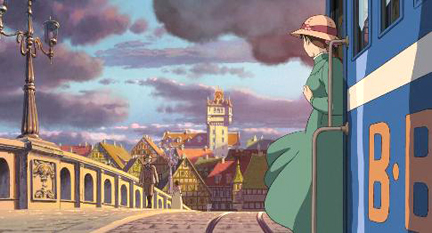
Howl's Moving Castle, 2004 (nominee, Academy Award for Best Animated Feature, 2005)
If you think you don't like animated feature films, Hayao Miyazaki will give you reason to reconsider. I know Japanese animation (anime) has in past had a reputation in the states as being the exclusive territory of geeks and 8 year old girls (not that there is anything wrong with either - I'm a big old geek, myself... and vaguely recollect having once been an 8 year old girl). That notion regarding animation's limitations is changing and Miyazaki's work will show you why.
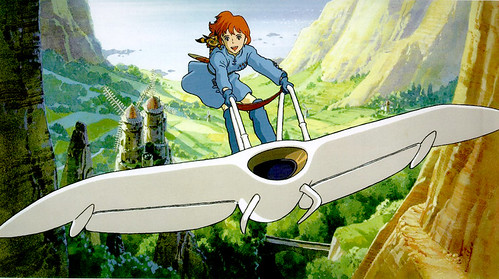
Nausicaä of the Valley of the Wind, 1984
Hayao Miyazaki is an animated film director and a co-founder of the animation studio and production company Studio Ghibli. Not only are his films are breathtakingly beautiful and full of interesting, complex characters, but the protagonists in the vast majority of his feature length films are female. He creates positive role models for girls in his intelligent and independent female characters.
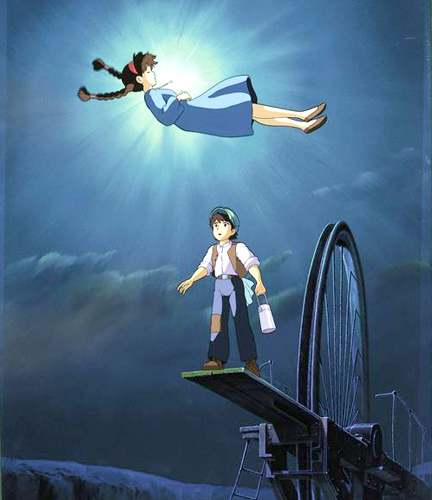
Laputa: Castle in the Sky, 1986
He also revisits themes of environmental awareness, tolerance of cultural differences and learning not to judge by appearances. You can feel safe that your children will receive positive messages from a Miyazaki film, but his films aren't created specifically for children. Studio Ghibli produces films that are works of art and have been crafted to appeal to a broad age range.
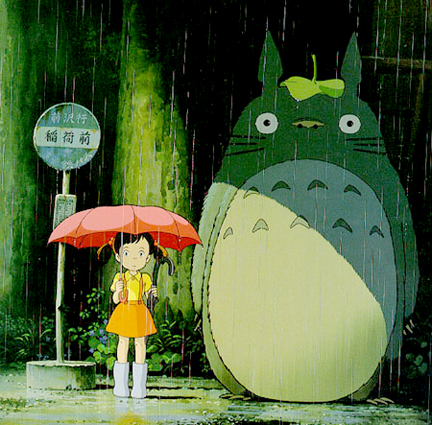
My Neighbor Totoro, 1988
With Disney's release of Princess Mononoke in the U.S., a wider audience found Miyazaki's work, but I don't know that the films have received sufficient recognition in the states for their unique approach to gender roles and consistent representation of well-rounded and interesting female characters. From the princess protecting her people and acting as the sole voice of reason in a world under incredible environmental strain in Nausicaä of the Valley of the Wind to the young girl trapped in the body of an old woman living in the midst of a senseless war in Howl's Moving Castle, Miyazaki's films deliver positive female role models again and again. Each film also presents distinct characters, instead of regurgitating the same heroine repeatedly. They are also well balanced, typically having a male counterpart to the female character.
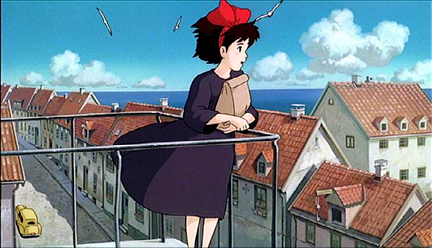
Kiki's Delivery Service, 1989
Another interesting chracteristic of a Miyazaki film is that he does not paint his villians with broad strokes. The article on Hayao Miyazaki in Wikipedia notes, "One of the most distinctive traits of Miyazaki's films is their lack of stereotypical characters. His characters have complex motivations, and while some can be better or worse than others, they are often capable of change. Many seemingly menacing characters are morally ambiguous, and while not necessarily protagonists, are not clearly defined as antagonists." Even if the antagonist is somewhat defined, you are often put in a position to understand WHY they do what they do. As in life, good and bad aren't simple in a Miyazaki film. I love that.
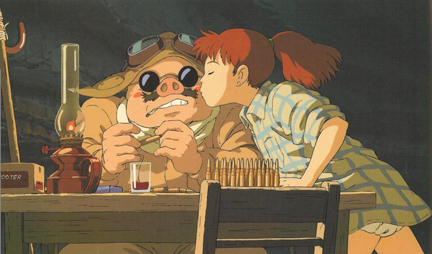
Porco Rosso, 1992
I would have to say that I find Miyazaki's body of work to be one of the most consistently feminist friendly of any filmmaker (animated or otherwise) I know. This is particularly refreshing, however, to see in animated film, as you may notice that there are a dearth of strong female characters in that arena. Too many animated films and television shows have almost all male characters and one or two token females. To judge based on most animation (particularly in the U.S.) you would think that women were a dwindling minority instead of half the population.

Princess Mononoke, 1997
As noted in the Wikipedia article, "Even Miyazaki's ancillary female characters share these traits. During the opening crisis in Princess Mononoke, three young farm girls are running from a monster. When one trips and falls, her companions, who could have continued their escape, stop running; one helps the girl who has fallen, and the other draws her blade for defense, despite the seeming futility of their actions." The world he creates in his films reinforces positive and diverse images of women, even in the details.
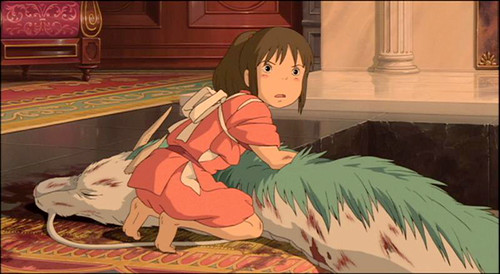
Spirited Away, 2001 (winner, Academy Award for Best Animated Feature, 2002)
If you have not yet discovered his work for yourself, I strongly urge you to rent one of his films. Not only are they full of complex characters, strong women and themes of environmental awareness and non-violent conflict resolution, they are also a feast for the eyes. His work is some of the fullest use of the medium as genuine works of art that I have ever seen. I would personally recommend starting with Princess Mononoke or Spirited Away (although my personal favorite is Howl's Moving Castle).
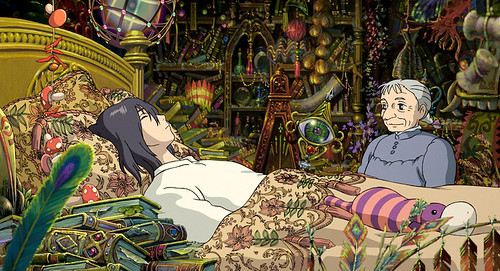
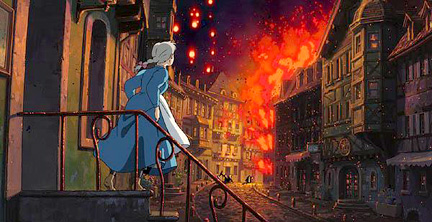
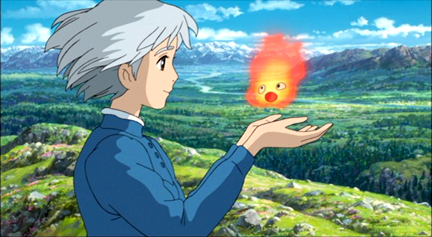
Howl's Moving Castle, 2004 (nominee, Academy Award for Best Animated Feature, 2005)
... and coming soon is:
Ponyo on a Cliff, summer 2008

What a nice post:)
ReplyDelete